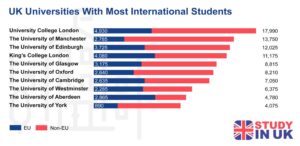INFORMATION about higher education and research in the United States is available in great, to the uninitiated, indeed, in embarrassing abundance. Besides the ‘catalogs and reports of a thousand colleges, universities, and professional schools, there are the excellent statistical summaries and surveys of the Bureau of Education, a plentiful stream of articles in American periodicals, reports of investigations carried out under the direction of great educational associations and foundations such as the Carnegie Foundation for the Advancement of Teaching, and records of impressions of visitors from Europe. The conceptions current in Great Britain owes their origin largely to the last-mentioned source and, perhaps not less, to unpublished impressions of other visitors to America, to contact with American visitors to Europe, including Rhodes scholars, and to references in popular fiction. Anyone desiring to apply to conceptions thus formed the test of a purely objective, well-authenticated, comprehensive, and up-to-date survey could not do better than study the handbook1 recently issued by the American Council on Education.
Historical Background of American Universities
The roots of American universities stretch back to the 17th century, with Harvard University being the first institution founded in 1636. Over the centuries, the landscape of higher education has evolved significantly, with key milestones such as the Morrill Act of 1862, which established land-grant colleges, and the G.I. Bill, which expanded access to higher education for veterans after World War II. Today, American universities are known for their commitment to research, innovation, and inclusivity.
The Ivy League
The Ivy League is a group of eight prestigious private colleges in the Northeastern United States, known for their academic excellence and selective admissions.
List and Brief Description of Ivy League Schools
- Harvard University – Located in Cambridge, Massachusetts, it’s the oldest higher education institution in the USA.
- Yale University – Known for its excellent law and drama programs, located in New Haven, Connecticut.
- Princeton University – Located in Princeton, New Jersey, famous for its strong emphasis on undergraduate education.
- Columbia University – Located in New York City, it offers extensive research opportunities.
- University of Pennsylvania – Known for the Wharton School of Business, located in Philadelphia, Pennsylvania.
- Dartmouth College – Located in Hanover, New Hampshire, it offers a strong liberal arts education.
- Brown University – Located in Providence, Rhode Island, known for its flexible curriculum.
- Cornell University – Located in Ithaca, New York, it offers a diverse range of programs and strong research focus.
Importance and Influence of the Ivy League
The Ivy League schools are renowned for their rigorous academics, influential alumni networks, and significant contributions to research and society. They set a benchmark for excellence in higher education worldwide.
Public Universities
Public universities are state-funded institutions that offer a wide range of programs at affordable tuition rates for in-state students.
Notable Public Universities
- University of California, Berkeley
- University of Michigan, Ann Arbor
- University of Virginia
- University of North Carolina at Chapel Hill
Benefits of Attending a Public University
Public universities often provide a diverse student body, numerous academic programs, and significant research opportunities at a lower cost compared to private institutions.
Private Universities
Private universities are funded through tuition, private donations, and endowments. They tend to offer smaller class sizes and more individualized attention.
Differences Between Private and Public Universities
Private universities typically have higher tuition rates but offer generous financial aid packages. They also emphasize a strong sense of community and campus culture.
Notable Private Universities
- Stanford University
- Massachusetts Institute of Technology (MIT)
- Duke University
- University of Chicago
Community Colleges
Community colleges provide two-year associate degrees and certificates, often serving as a steppingstone to four-year universities.
Benefits of Community Colleges
Community colleges offer affordable tuition, flexible scheduling, and pathways to transfer to four-year institutions.
Transition from Community College to University
Many students start at community colleges to complete general education requirements before transferring to a four-year university to complete their bachelor’s degree.
Liberal Arts Colleges
Liberal arts colleges focus on undergraduate education, emphasizing a broad-based curriculum in the humanities, social sciences, and sciences.
Advantages of a Liberal Arts Education
Students gain critical thinking skills, effective communication abilities, and a well-rounded education that prepares them for various careers.
Notable Liberal Arts Colleges
- Williams College
- Amherst College
- Swarthmore College
- Pomona College
Research Universities
Research universities are at the forefront of scientific discovery and technological advancements, fostering innovation through extensive research facilities and funding.
Major Research Universities
- Johns Hopkins University
- California Institute of Technology
- University of California, San Francisco
- University of Wisconsin-Madison
Contributions to Technology and Society
These institutions contribute to advancements in medicine, engineering, and technology, often collaborating with industries and governments.
Specialized Institutions
Specialized institutions focus on specific fields such as arts, technology, or business.
Examples of Specialized Institutions
- Juilliard School – Performing arts
- California Institute of the Arts (CalArts) – Visual and performing arts
- Harvey Mudd College – Engineering and science
- Fashion Institute of Technology (FIT) – Fashion and design
Online Universities
Online education has grown significantly, offering flexible learning options for students worldwide.
Benefits of Online Universities
Online universities provide accessibility, convenience, and often lower costs compared to traditional universities.
Prominent Online Universities
- University of Phoenix
- Southern New Hampshire University (SNHU)
- Western Governors University (WGU)
- Liberty University Online
Admission Process
The admission process typically includes submitting transcripts, standardized test scores, essays, and letters of recommendation.
Tips for a Successful Application
- Start early and stay organized
- Highlight unique experiences and strengths
- Seek strong letters of recommendation
Importance of Extracurricular Activities
Involvement in extracurricular activities demonstrates leadership, commitment, and a well-rounded personality.
Financial Aid and Scholarships
Financial aid can come from federal, state, and institutional sources, including grants, loans, and work-study programs.
Types of Scholarships Available
- Merit-based scholarships
- Need-based scholarships
- Athletic scholarships
- Special interest scholarships
How to Apply for Financial Aid
Complete the Free Application for Federal Student Aid (FAFSA) and research specific scholarships offered by universities and private organizations.
Campus Life
Campus life includes academics, social activities, and personal development opportunities.
Extracurricular Activities and Clubs
Engage in clubs, sports, and organizations to enrich your college experience and build lasting friendships.
Importance of Networking
Networking with peers, faculty, and alumni can provide valuable connections and career opportunities.
Career Opportunities After Graduation
Graduates from American universities have access to diverse job opportunities and are often recruited by top companies.
Importance of Internships and Work Experience
Internships and part-time jobs provide practical experience and can lead to full-time employment after








